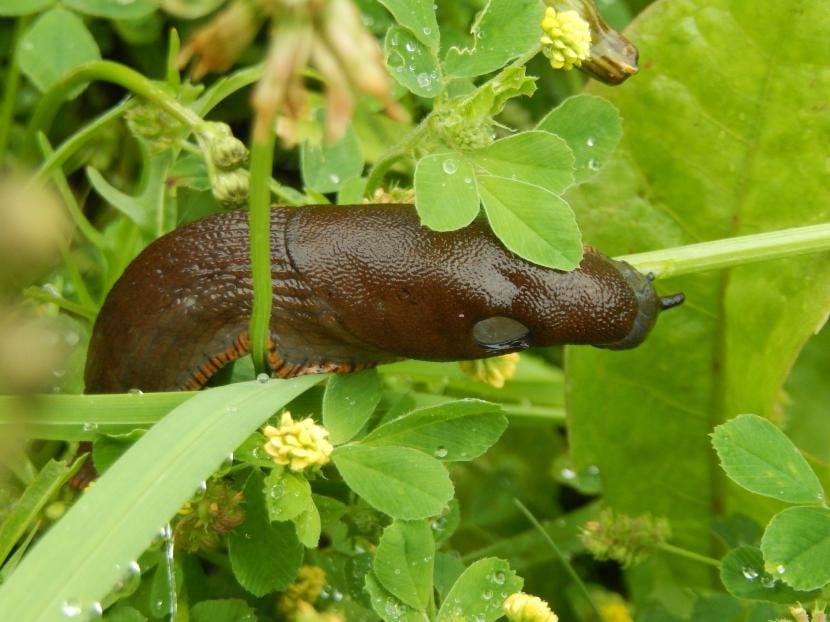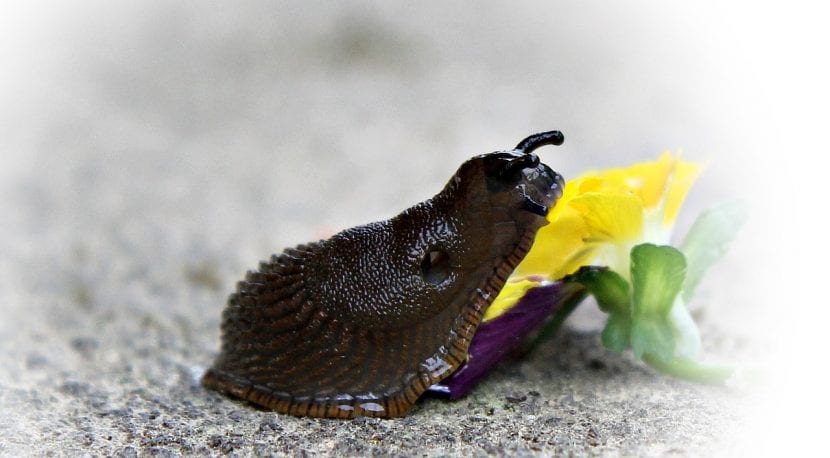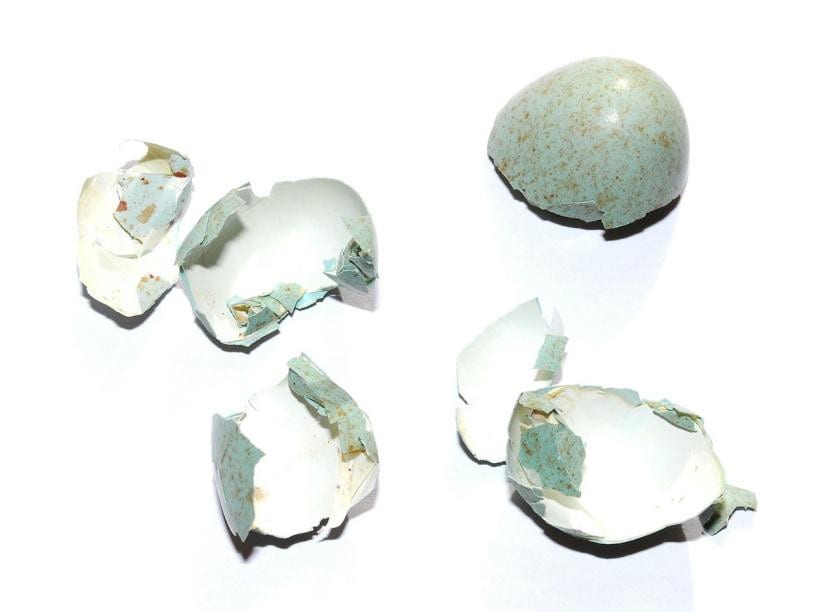
Slugs are animals that you do not normally want to have in gardens or near plants. They, like snails, have a voracious hunger and eat all the soft parts of plant beings: leaves, stems, ... can even cause a lot of damage to cacti.
Knowing them will be very useful to us to know how to keep them away from our particular paradise. Let's get to it 🙂.
What are slugs like?

Slugs are shellless mollusks that measure between 1 and 15cm. On its head we find four antennae, as well as the mouth that includes two jaws and very small teeth, the respiratory orifice called a pneumostoma, as well as a serrated tongue. Thanks to these, they can locate food and chew it without problems, something they do at night as they are nocturnal animals.
Depending on the species, they can travel, as long as the temperature is comfortable, between 4 and 7 meters in the same day, as is the case with the gray slug. As they do so, a gland located at the front end of the foot secretes a mucus that allows them to move.
When winter arrives and the mercury in the thermometer begins to drop below 5ºC, they are buried underground, where they will remain until the spring heat awakens them. After the hibernation period has passed, they will reproduce again.
It must be said that these mollusks are hermaphrodites, but not at the same time. The male organs are activated first, and then the female ones. The eggs are laid within a few days or weeks after mating, eventually laying between 100 and 500 eggs in groups of 10 to 50 in holes dug in the ground.. These eggs are spherical in shape, and are whitish yellow or transparent, and will be incubated for up to three months.
Life expectancy is between 9 to 18 months depending on the species.
What damage do they cause to plants?
Slugs are one of the main enemies of plants, especially if we live in an area where it usually rains on a regular basis. The damage they cause is very similar to that caused by caterpillars, that is, bites into the tissues, although the mollusks will also leave a trail of slime in the pots, leaves and stems. It is also possible that we see their droppings, which are more or less elongated, less than 0,3cm wide, and black in color.
How to keep them away?
We can choose natural or chemical remedies to protect our plants. Let's see what they are:
Remedies to repel them

They are especially suitable when there are very few specimens and the damage caused by them is not very important.
Eggshells
Crushed eggshells are some of the best shellfish repellants out there. In addition, they will help you to fertilize the earth as they decompose, and you just have to spread them on the substrate. Interesting, isn't it? 🙂
For the remedy to be more effective, you can put ashes -wood-, which will prevent other animals, such as aphids, from attacking the plants.
Clear plastic bottle
If you have small plants you can protect them by putting a transparent plastic bottle on them, as if it were a greenhouse. Of course, you can only do it if you make some holes in it so that the air can be renewed, and only in winter.
Roof tiles
These mollusks love dark, damp places. To attract them, you can place some tiles in a corner of the garden. The next morning, surely many will have gone to protect themselves there, and you will be able to catch them and carry them as far as possible.
If you don't have tiles, you can put aluminum blocks or plates on them.
Remedies to eliminate them

These are recommended to apply when there is already a significant pest, but it must be taken into account that the products to be used can be toxic to humans, so children and domestic animals must be kept away from the treated areas.
Molluscicide
It is found in nurseries and garden stores, in granules and as a powder. It is spread a little on the surface of the substrate or soil, or around the plants that you want to protect. Rubber gloves must be put on before application.
Beer
The smell of this drink attracts slugs, so it will become your best ally against this pest. You just have to put a container near the area that you want to keep safe from their attacks, and fill it with beer. In no time they will begin to come.
Sal Island
Salt dehydrates them. If you put a little in a slug passage area, it will be very useful to keep the pest under control, and even to eliminate it. But you must be careful: if you put it on the surface of the substrate or near a plant, it will also end up affected.

Do you know other remedies to avoid these mollusks? If so, do not hesitate to leave them in the Comments section 🙂.
Hello, they gave me a succulent for my office, it is a small pot and it has several plants, it brought two slugs, I took them away, but I don't know if there are more. What I can do?
Hello Veronica.
You can treat them with molluscicides in granules. But wow, I don't think I have more 🙂
A greeting.